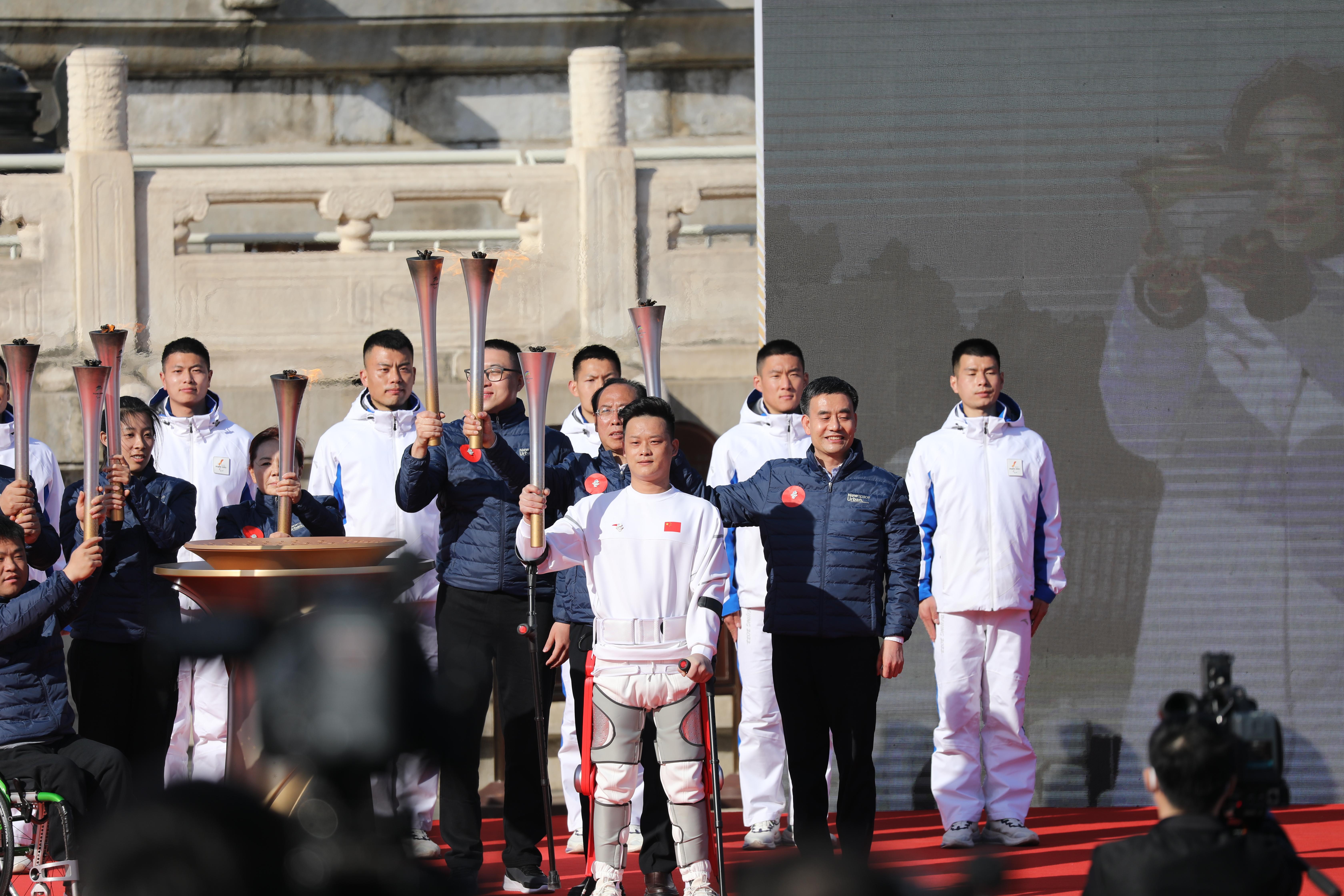On the afternoon of March 2, the ceremony of gathering of nine flames and the torch relay for the Beijing 2022 Paralympic Winter Games was held at the Temple of Heaven. Shao Haipeng, one of the nine representatives who lit the torch and also the one who has broken the world record for the robot walking marathon, walked onto the platform wearing an exoskeleton robot, which aroused widespread attention. This new generation of Ai exoskeleton robot Shao wore was developed by Beihang University and made its world debut that day.

Besides Shao Haipeng, there is another torchbearer with paraplegia, Yang Shuting, a young girl from Shaoyang City, Hunan Province, who also wore a skeletal rehabilitation robot. She will participate in the torch relay on March 4. With the help of these assisted exoskeleton devices, they realized their dream of standing and walking and carrying the torch.
These two devices, named “Daai Robot”, were developed by a team led by Shuai Mei, director of the exoskeleton laboratory of Beijing Advanced Innovation Center for Biomedical Engineering and researcher of the School of Biological Science and Medical Engineering, Beihang University.
“Ai exoskeleton robots can sense how fast or slow a person walks, and realize the self-adaptation of robotic assistance and human behavior, including complex movements such as going up and down stairs or slopes,” introduced Shuai Mei. The Ai exoskeleton robots can enhance the residual strength of muscles and activate the potential of patients, thus making their bodies become better. “Through extensive contact with patients, evidence collection and clinical trials, precise control of the volume and weight of products, and non-stop research on new gait and new methods, we finally develop more series of safe and reliable robotic products.”
With the power of science and technology, Daai Robots have created social value by helping and caring for people with disabilities, playing an exemplary role in promoting the development of China’s rehabilitation robot industry. By breaking through the technical bottlenecks, this series of exoskeletons have become a new means of treating paralysis, achieving technological innovation and benefiting the general public.
Reviewed by Li Jianwei
Edited by Jia Aiping and Song Ziyun
Translated by Song Ziyun

